The temperature is dropping- time to pull out my cold weather remote canister gas stove. The Kovea Spider.
Made in Korea, the Kovea Spider (model KB-1109) is a quality piece of kit. Kovea produce stoves for both MSR and Snow Peak and have a reputation for well-manufactured products. Alternatively you can buy this great stove under the Kovea name at a reasonable price (around £46 in November 2020). Released in 2012, this stove has been around for years and as far as I can see, hasn’t undergone any noticeable change in that time. This is testament to a good design that delivers reliability. I have had mine for just four years however it doesn’t get used all year round as I use lighter canister top gas stoves for the majority of my backpacking trips.

While I usually rely on standard gas canisters/cartridges, with lindal valves, I have also used this stove with the cheaper aerosol cans of butane sold. These MSF-1A tins of butane can be purchased in bulk very cheaply. My best purchase price was realised when I came across a Blacks Outdoor equipment shop closing down. Plenty of kit was being sold off for ridiculous prices so I snapped up a dozen or so 220g tins of butane for just a few quid and I am still working my way through these.
To use these cans it is simply a case of purchasing a Kovea butane gas adapter converter – model Tka-9504 N O. This adapter fits directly on to a canister of pure butane. There are also adapters available to use the Kovea stove with the pure Propane and Camping Gaz type butane canisters. I currently have little experience of these but will be using a G-Works propane adapter this winter.
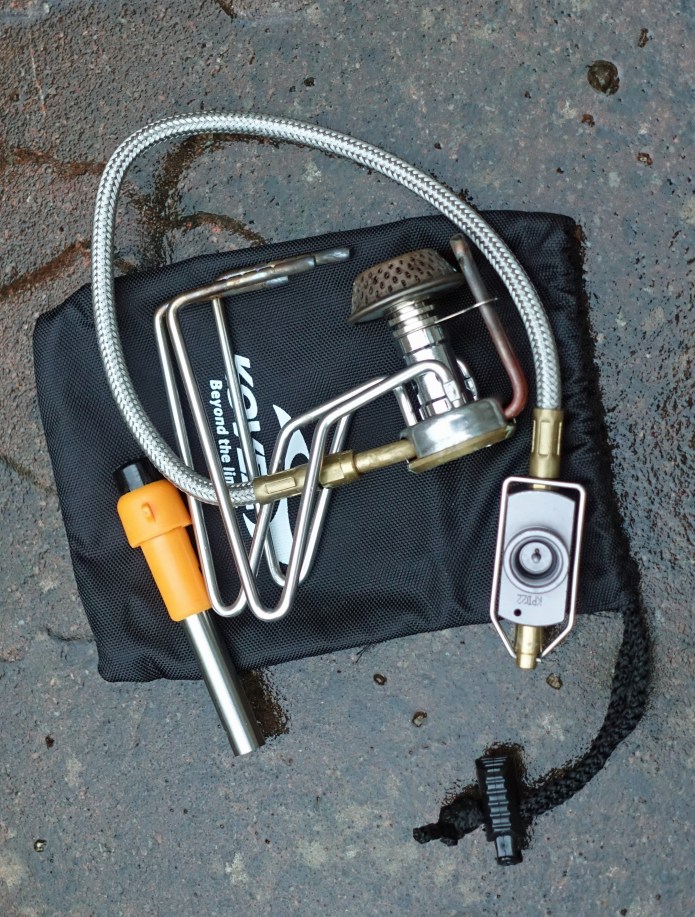
The Kovea Spider weighs 173g (stove only), and is sold with a small nylon pouch and piezo igniter. I ditched both pouch and igniter ages ago as the stove folds flat enough that with the flexible feed pipe looped around it, it sits very well within my flat sipper GSI mug that nests inside my favoured backpacking pan- the 110g Evernew 900ml with lid.
A Torjet lighter and sundries (often a small cloth to stop things rattling) sits with it, along with a butane gas canister adapter, job done.
Even though I prefer the Evernew pan, the Spider will squeeze in alongside a small gas canister in some other pots and pans from my modest selection. It has to be wiggled around into the one permitted orientation, but then fits easily into the old classic 128g MSR Titan Kettle with the lid clamping firmly above. However I prefer to keep a potentially mucky gas canister away from the inside of my pans and almost always keep these separate within my pack. But for a day hike where it is a clean canister being carried to a mid-day break and I am not bothered about packing a dirty one inside the Titan after, this is a good set-up.
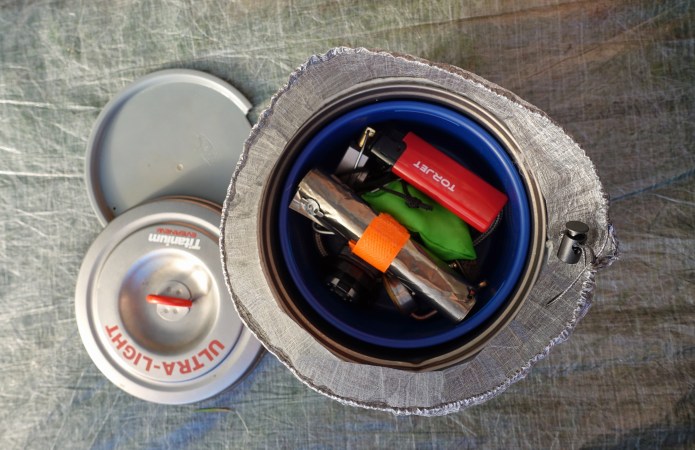
The problem with using gas stoves in the cold is the temperature at which gas in a canister vaporises. This isn’t as disastrous as many may make out and there is usually a way round it. Take a look at the side of a canister and it will tell you the exact mix of gases. Each gas vaporises at different temperatures- Butane has to be above -0.5°C, Isobutane above -11.6°C, Propane above -41.7°C. So you can see that when the temperature starts dropping below freezing, Butane is the first of the contents to struggle. Isobutane and Propane however, no problem. As the temperature drops still further, Isobutane will remain in liquid state and mostly only Propane will be exiting the canister in gaseous state. This is why you can be cooking or heating water with a normal gas stove a few degrees below freezing and it may be struggling to burn, or it may splutter, even possibly stop, despite a shake of the canister revealing that there appears to be plenty of contents. What will have occurred is that the Propane, and possibly Isobutane, have burnt off leaving the Butane behind still in liquid form.
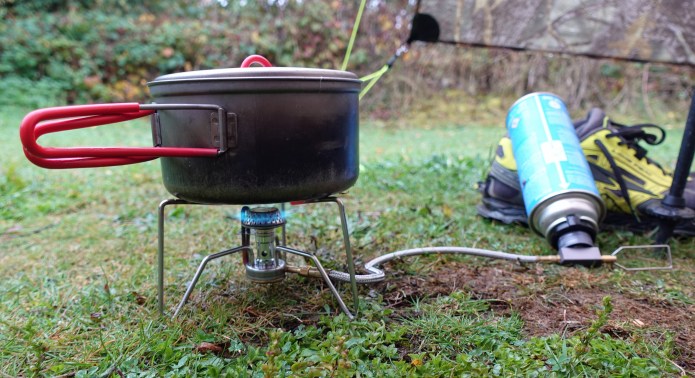
This reminds me that I should be buying a couple of ‘winter gas mix’ canisters in case we actually do get a decently freezing winter this year. There are also some tricks to keeping a gas stove working in the cold- amongst the simplest are keeping a canister inside the quilt overnight or beside a warm torso inside clothing.
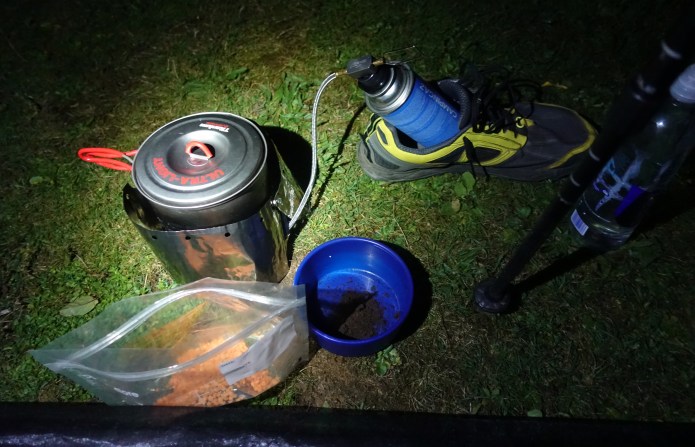

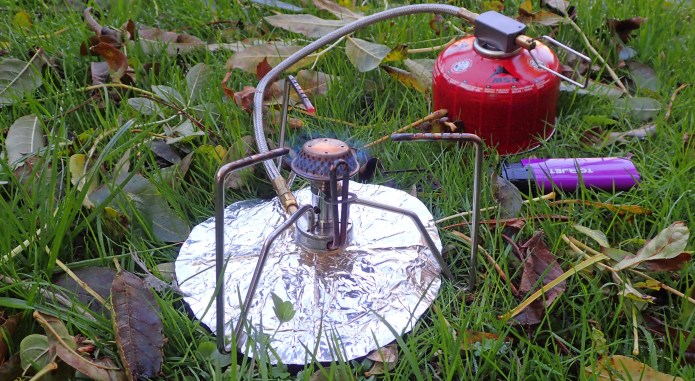
The Kovea Spider is fitted with the necessary features for a gas canister to be inverted (turned upside down) allowing liquid fuel to feed the stove. This is only possible with a remote canister stove fitted with a feed/supply hose/pipe. Not all stoves can accept liquid fuel. Stoves must be fitted with a pre-heat tube for liquid fuel to vaporise before reaching the burner head.
As well as having a rotating coupler to enable the canister to be flipped, you can see the metal feed loop that passes near the Kovea’s burner head, it is here that liquid fuel is heated to allow it to vaporise.
Two things to note are that the stove must be lit normally, with a gas supply initially prior to the canister being inverted. Also, because there is liquid gas in the supply pipe, it continues to burn for a few seconds following it being turned off. These quirks are quickly adjusted to in use.
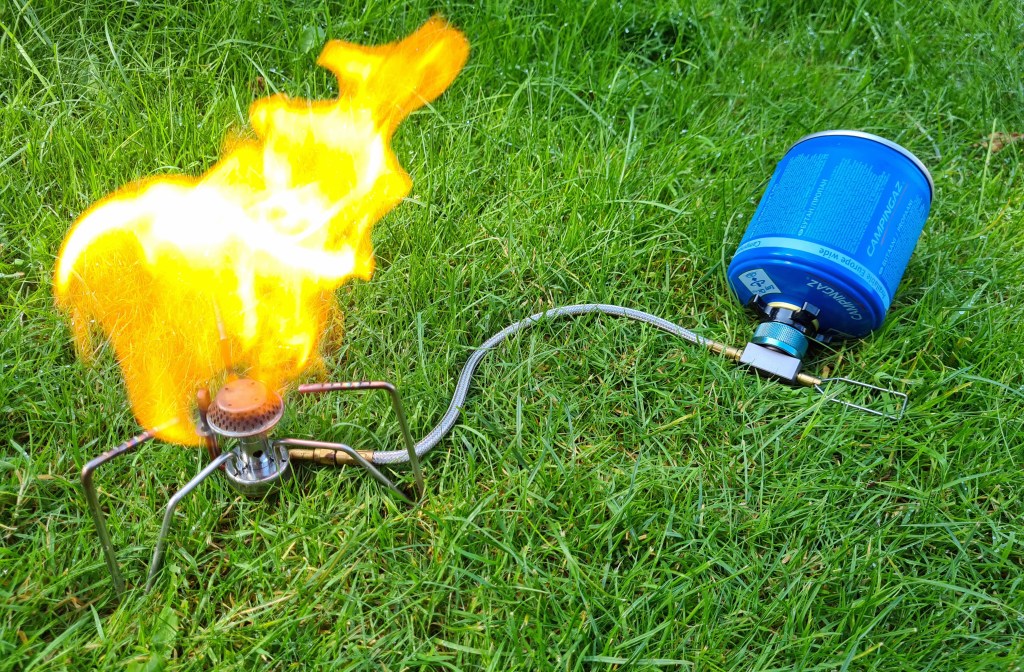

This is a very stable stove with three wide, fold-out pot/pan supports giving a spindly spider like look, from which the stove derives its name. There is no built in protection from wind and I usually just place my pack on its side or use my Thermarest Z-Seat to provide any wind protection required. Sometimes, if I can be bothered, I will tuck a small roll of titanium foil in to my cook kit. You can see this being used with the Kovea Spider in an image below. This stuff is incredibly lightweight and is just a few quid to buy online. I use a pair of scissors to cut it down in height to suit the low profile stove, usually managing to give myself deep and nasty cuts with the foil in the process. Another really good option is to use the bespoke Ocelot windscreen from Flat Cat Gear. I looked at that 14g option here.

I am able to move the flame from a low simmer to a roaring maximum with the large fine-adjust control. Note that the fold out wire control is placed at the canister end of the feed pipe, and not near the burner, so it is a lot easier to alter the flame when the burner is surrounded by a windscreen. Kovea state that gas consumption is 130 g/h however I rarely run a stove on full.
Three Points of the Compass almost always uses an Evernew 900ml pan when backpacking. This is pretty wide and not all stove flames suit this pan as it is made from thin titanium. For simply boiling water, this isn’t a problem with any stove but some stoves have a centrally focused flame that easily burns food if cooking. While the Kovea Spider has a small burner, it has a wide flame pattern and suits wider pans admirably. On a simmer, food seldom burns if you are attentive, even with a thin titanium pan.
Other options:
The lighter Alpkit Koro and Fire Maple Blade 2 stoves provide similar capabilities to the Kovea Spider, and are tempting alternatives. The Alpkit stove is actually made for them by Fire Maple. I have used the Fire Maple Blade 2 stove extensively and reviewed that separately (link below). However the Spider is such a reliable piece of kit that I return to it frequently. The Optimus Vega is a similarly well made and lightweight offering. The Vega is also a tad more robust than both Alpkit and Fire Maple offerings. There are a couple of features on the Vega that I particularly like. While the Kovea Spider has just a few very small corrugations on the pot supports, the Optimus Vega has really good serrations throughout the support lengths. I also like the fold out canister support on the Vega for when the gas canister is inverted. And the BTU output is greater on the Vega- 8800 BTU/h against approx. 6000 BTU/h (which may be down to burner head size). This is not an absolutely crucial aspect for Three Points of the Compass but if being used as a winter gas stove, this can occasionally important to others. The wide burn head on the Vega also suits my preferred cooking vessel, the aforementioned wide Evernew 900ml pan. Off-setting that, the Vega is a bit bulkier than the Spider when folded. I will try and get round to producing a proper review of the Vega at some point. That said, I am looking forward to another season of using both Fire Maple 2 and Kovea Spider stoves.

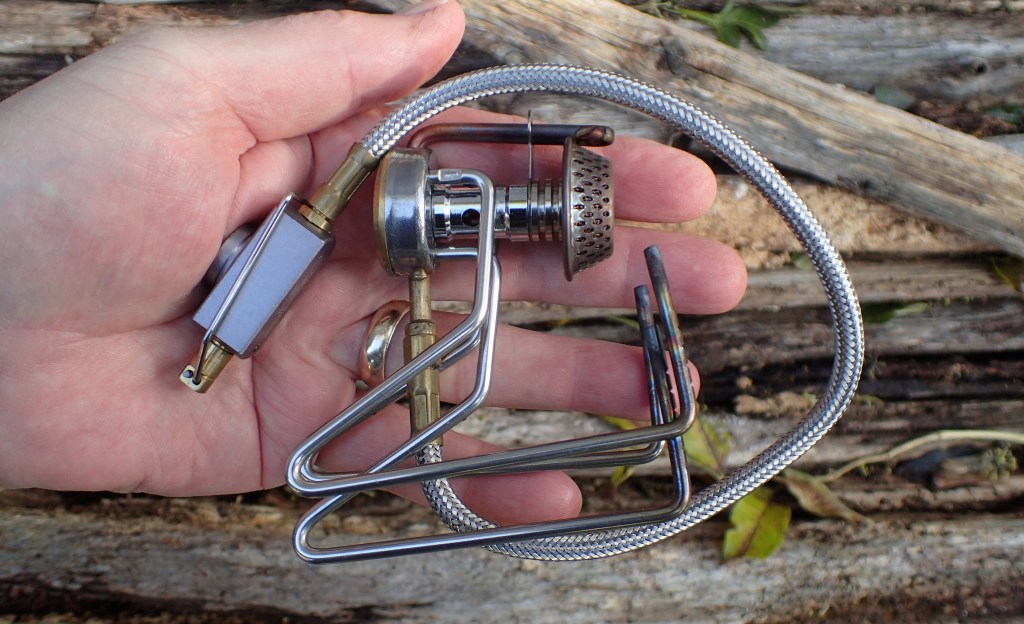
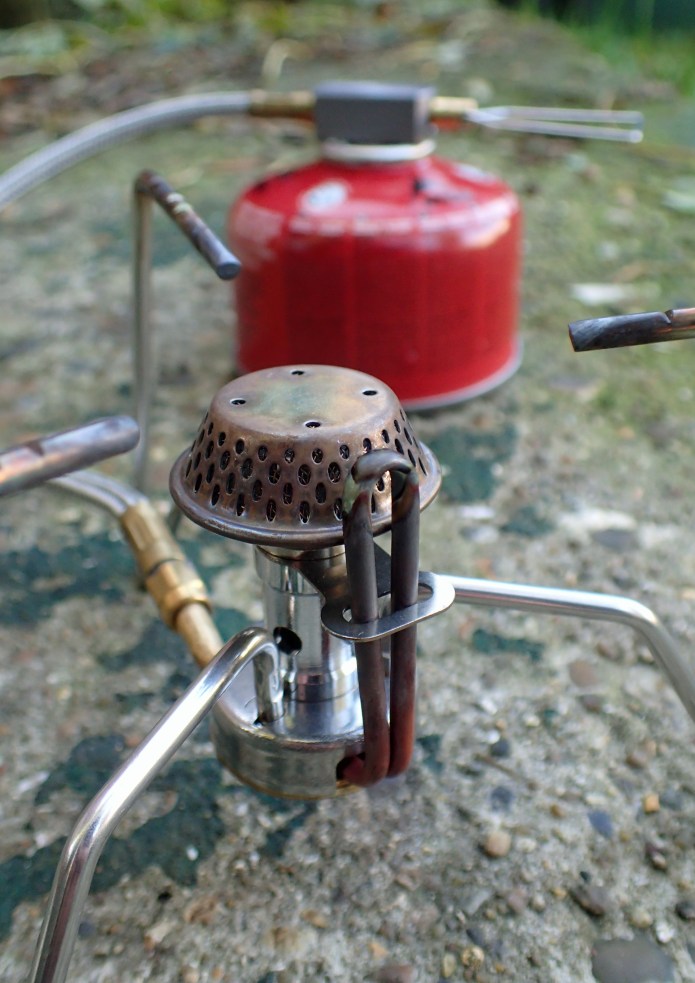
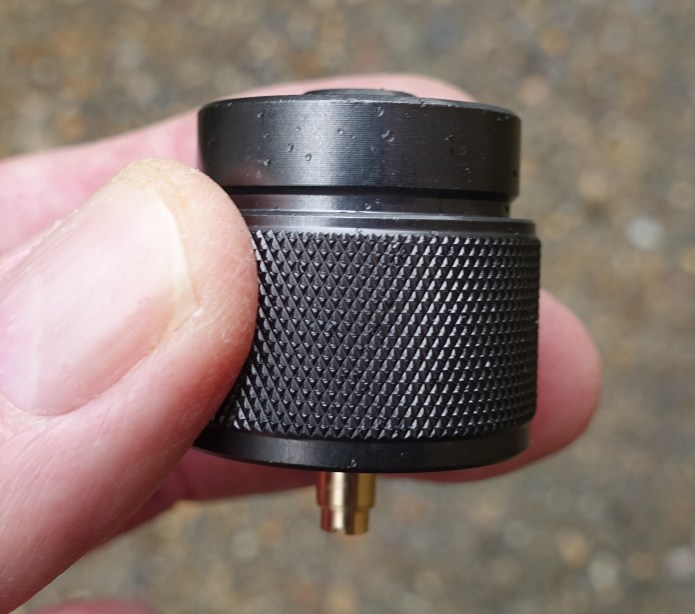
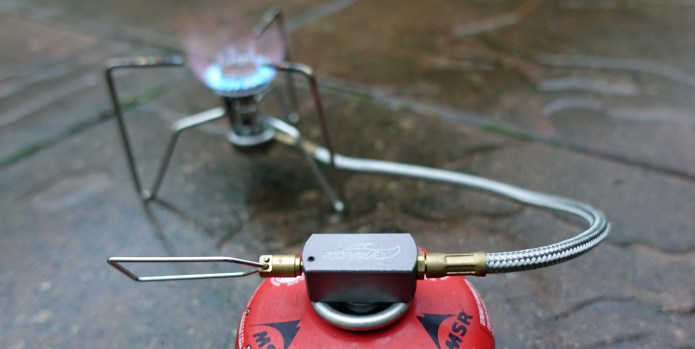
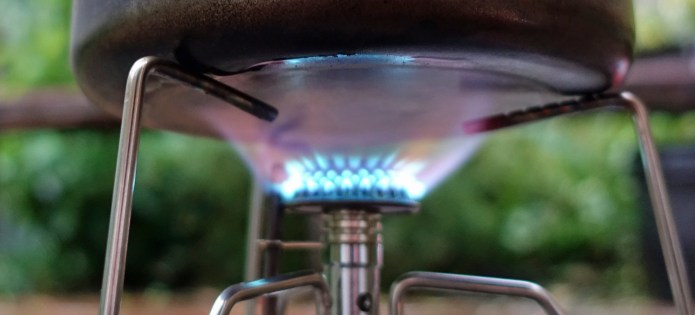
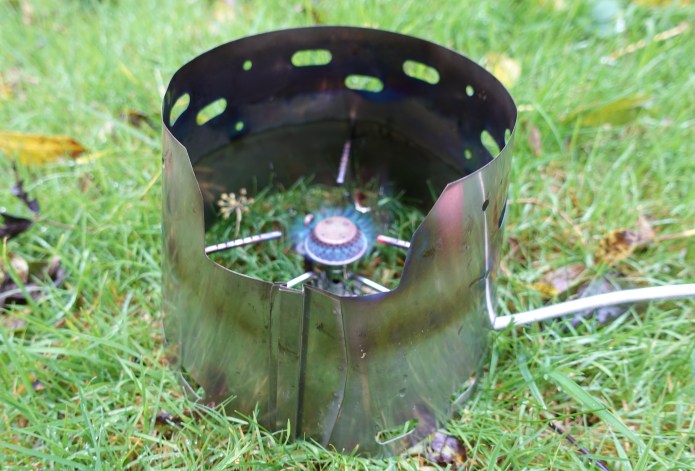


Did you stick with the Spider a bit longer or did you go with the Vega. I’m looking at a few stoves and set on the Kovea Spider most. Here was my short list from a couple of days looking around.
Kovea Spider
Optimus Vega
GSI Pinnacle 4 Season
Primus Express Spider II
I am looking for something that will lead me into winter camping and don’t fancy petrol stoves.
Cheers.
LikeLike
Hi Dave, I haven’t used my Kovea Spider since last winter. Come this winter I’ll be using it again. It is a cracking stove and I don’t feel any need to change from it soon. But, as always, you pays your money and you make your choice, best wishes with which ever you go with
LikeLike
And here I was thinking how witty I am by using my spider and my caldera cone ti tri as a wind screen, and low and behold your way ahead of me.
Ad a search and rescue ranger here in the states for the last 35 years or so, I think I’ve used or have seen most stoves on the market. And I must say this kit (A spider with a caldera cone) is the most versatile and in my opinion, the most dependable kit I’ve ever come across.
I’ve used this set up from extremely hot 126 degree fahrenheit to extremely cold and windy blizzard conditions of 36 degrees below zero Fahrenheit temperatures, and altitudes from 124 feet below Sea level in death valley to 14.000 feet in Colorado, and in all honesty, not even a hickup from this stove system. Reliability is the number one requirement for my kit as well as every Rangers first focus when selecting a stove, so having said that, and with the addition of a caldera cone ti tri and evernew titanium pot, I believe if you purchase this set up, you’ve reached the penicle of kits.
LikeLike
I agree Kurt, a really good combo. Great to see you have successfully seen some extremes of conditions with it
LikeLike